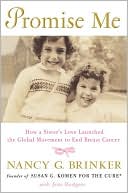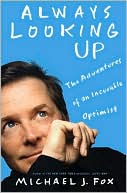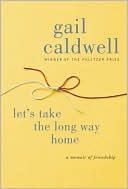A Slant of Sun: One Child's Courage
Named a Best Book of the Year by Salon magazine and The Philadelphia Inquirer, A Slant of Sun was praised for its incandescent prose about the experience of loving a child who brings tremendous frustration and incalculable rewards and for its extraordinary resonance. Like Operating Instructions and The Liars' Club, A Slant of Sun is a contemporary classic. Nearly one in five children grow up facing a developmental or behavioral challenge, and like them, Beth Kephart's son, Jeremy, showed...
Search in google:
At a time when as many as one in five children face the challenge of growing up with a behavioral disorder, more and more parents are finding themselves at a loss to know how best to raise their children. The New York Times "Beth Kephart . . . is a gifted, even poetic writer."
In the fall of 1991, Jeremy, our two-and-a-half year old son, was diagnosed with pervasive developmental disorder not otherwise specified, a complex condition that manifested itself in Jeremy with atypical speech, impaired social interactions, a range of perseverative and compulsive behaviors, and, at times, the sorts of exceptional talents not exhibited by the ordinary child.\ In truth, Jeremy's diagnosis carried the weight of the inevitable. For those keyed into the cues, Jeremy had always shown signs of being different. Music, paintings, the moon impressed him; rattles, bottles, the typical baby gear did not. He felt safe with his father, myself, and his grandparents, but he allowed few others into his world. He was not a child who went readily from knee to knee, and by the time other children his age were waving hello, he was hiding beneath his hat or inside my skirts or far away, inside his room.\ Jeremy's stance on life became even more exaggerated during his second year. If a person could survive on juice or milk alone, he would have; most solid foods were so displeasing to him that he refused to learn the basic science of a spoon. His strong personal code of likes and dislikes devolved into what, looking back, could only be fairly classified as obsessions—a violently strong passion first for trains and cars, then for hats, then knights, then planes, then trucks, the obsession with cars persisting throughout and above all the others. Though Jeremy danced with the grace of a dove and demonstrated an acute sense of balance, he was never adept at balls or tricycles, at the act of jumping or skipping, at the simplest execution of arts and crafts. And while Jeremyacquired language at a youngish age, he did not use his words as others do, did not string them together to inquire or declare. Instead Jeremy's words were deployed as epithets, affixed to those things deigned worthy of his notice.\ Reflecting back, it is all too easy to identify the early warning signs, to organize them on this page. At the time, however, my vision failed me. I focused far more strenuously on my own weaknesses as a parent than on the cranks and creaks in Jeremy's development. I was a stay-at-home mother who earned my income in solitude at night by writing articles for corporations and magazines, and I was a person with a quiet life—a member of no play groups, aunt to no nieces or nephews, a personal calendar absurdly stark and bare. I had, in other words, little to compare my son against, and so I assumed that his struggles were caused by the environment I created, my lack of expertise in the rules of mothering, and my inability to locate the proper key to his world. For a long, long time, I drew no conclusions about my son.\ It took an insult from a neighborhood baby-sitter to get the message through. It took my husband, my mother, a conversation with old college friends in a motel miles from home to shatter my delusions and force me into action, into meeting with a doctor and submitting to the exams. And though it should have been helpful to have a name for the thing that was so deeply troubling Jeremy, a diagnosis is far from a cure. The fix for children like Jeremy is, I have discovered, an elusive admixture of trial and error. There is, you are told, no time to lose—neural pathways are settling in, lifelong habits are forming, behavioral tics are taking over—and so you push and push for the right concoction of language therapy, occupational therapy, play therapy, social therapy without ever having a firm sense of ultimate boundaries or goals. What, in the end, are you fighting for: Normal? Is normal possible? Can it be defined? Is it best achieved by holing up in the offices of therapists, in special classrooms, in isolated exercises, in simulating living, while everyday "normal" happens casually on the other side of the wall? And is normal superior to what the child inherently is, to what he aspires to, fights to become, every second of his day?\ My husband is an artist and I am a writer, and Jeremy is the child we created. In him we saw so many aspects of ourselves—compulsivity, aloofness, strong-mindedness, anxieties—and yet the challenge we faced was to free him of our genetic code, our habits. We made up our own rules as we went along—consulting with the therapists who "felt" right, implementing our own idea of appropriateness at home, divining highly personalized theories about progress. It was a lonely business. It pushed us to our extremes. It required more of me than I actually had to give, and at the end of it all, it was Jeremy himself who provided the light and the wisdom that moved us forward.\ This is a book about a little boy and his mother. It is about a child who against all odds is learning to live in this world, to even, incredibly, make it better. It is about shame, prejudice, fear, solitude, and their natural counterparts. About reaching out and holding on.\ Today Jeremy, our only child, is a successful second grader at a country Quaker school. He is reading difficult books with dramatic emphasis, designing mazes for his father, whizzing around in adult computer programs, asking grown-up questions on class field trips, writing fiction in a daring hand on an oversized notepad, Rollerblading with a vengeance, shooting fourteen baskets into the hoop during gym. He goes to the parties of his Quaker classmates, and he tells me the stories of their lives: James is a musician, Eliza has a new baby sister, Meghan knows how to spell all the words in the world, Will will be an inventor, when he grows up. Lately Jeremy has even been learning how to do recess, discovering games like hide and seek, let's-play-house, and store. And though social cues still sometimes elude him, though speech catches in his throat, though there are habits that still need overcoming, Jeremy, in my book, has won the battle against his genes. In the process, he has made me who I am today—gentler, more patient, more honest, more faithful, so deeply in awe of the courage of young hearts.
preface9dancing15reaching for my son27hat tricks36hard knocks43where silence starts51diagnosis64aftermath77looking for help78one sudden, quiet knowing99working it out107houseguest120waiting for the red baron127afternoon concert, minor keys136competing wisdoms146child's play153moving on160the farmer in the dell174wings185
\ Baltimore Sun[S]trikingly simple yet profound. . .Kephart's prose is luminous, her story so moving that I savored it, read and re-read it within days.\ \ \ \ \ Deirdre DonahueBeth Kephart's A Slant of Sun offers a most original and moving examination of what it means to be a parent. The book also offers a thought-provoking way of looking at children and their differences....Kephart is a very gifted and insightful writer.\ — USA Today\ \ \ SalonIn page after page of intimate, searching prose. . .this brave book serves as a parenting guide stripped to its essentials, a testament to the open heart of one mother and solid proof that. . .parents do matter.\ \ \ \ \ Salon Magazine"There are lessons here for everyone about, quite simply, what it means to be fully alive."\ \ \ \ \ The New York Times"Beth Kephart . . . is a gifted, even poetic writer."\ \ \ \ \ Publishers WeeklyAt two and a half years old, Kephart's son, Jeremy, was diagnosed as suffering from pervasive developmental disorder, a condition that has some of the elements of autism. The child's speech was "atypical," he was terrified of contact with everyone but his parents and grandparents, and his life became characterized by certain behaviors that became obsessions. Because his situation was so anomalous, even professionals used to dealing with so-called exceptional children were at a loss as to how to cope with Jeremy at times. But the Pennsylvania-based author and her husband, Bill, after blaming themselves for the child's difficulties and encountering problems with experts, determined to deal with their son on his own terms and to modify his behavior without wrenching him away from his few interests, ranging from trains and cars to planes and trucks, and by letting him set his own pace when encountering other children and adults. They also chose his schools wisely, with the result that Jeremy now functions well in society at age nine. Freelancer Kephart conveys her frantic reaction to the original diagnosis, her furious desire to change conditions for Jeremy at once and her ultimate realization that a tangible, positive outcome was possible, given great patience. Kephart tells an affecting story of parental dedication.\ \ \ \ \ Library JournalLike most mothers of special-needs children, Kephart was frustrated and confused by the lack of knowledge offered by her son's physicians. Jeremy's condition was diagnosed as pervasive development disorder (PDD) and similar to autism; the doctors held few answers and less hope. Guided by mother's love, she stumbled through the therapy maze before choosing a different path for Jeremy. In this work, Kephart describes her family's struggle to bring Jeremy out of his isolation into their world. Demonstrating how labels such as PDD are meaningless to a mother's heart, she follows Jeremy as he overcomes his fear of strangers, his inability to speak in sentences, his difficulty interacting with peers, and his obsessive play rituals to become a successful second grader in a normal classroom. Her affecting story will make a welcome addition to any collection. -- KellyJo Houtz Griffin, Auburn, WA\ \ \ \ \ Margaret Talbot....[W]hen Kephart's son, Jeremy was 2 1/2, doctors concluded he had something called pervasive developmental disorder....She writes eloquently in A Slant of Sun...of her panic before his diagnosis and his first rounds of speech therapy....A Slant of Sun is a memoir--a personal and not a prescriptive book--but one of its strengths is that it makes us think...not just for Jeremy but for other idiosyncratic children too. -- The New York Times Book Review\ \ \ \ \ SalonIn page after page of intimate, searching prose. . .this brave book serves as a parenting guide stripped to its essentials, a testament to the open heart of one mother and solid proof that. . .parents do matter.\ \ \ \ \ The Baltimore Sun[S]trikingly simple yet profound. . .Kephart's prose is luminous, her story so moving that I savored it, read and re-read it within days.\ \ \ \ \ Kirkus ReviewsA mother's bittersweet account of raising a son to whom experts had given the ungainly label "pervasive developmental disorder not otherwise specified," a disorder akin to autism. When Kephart, a freelance writer, gave birth to her son, Jeremy, in 1989, he seemed like a perfectly normal baby. By the time he was a toddler, however, it was clear he had problems. Jeremy was terrified of strangers, beset with obsessions, had poor motor skills, and did not use words normally. The diagnosis of PDD that Kephart was given after extensive testing did not come with a set of helpful instructions for dealing with it. Her efforts to find the right therapists and programs for Jeremy are a story of determination, frustration, ingenuity, partial successes, tireless efforts, and most of all, a mother's love. Working with no guidelines, no knowledge of what milestones to look for, Kephart learned to trust her own instincts. A work-at-home mother, she devoted hours every day to working with her son, involving him in activities other than pacing or running in circles or playing with the toy cars that always remained his strongest obsession. She endlessly spoke her own thoughts aloud to Jeremy to keep him connected to the world of words, and she continually read and told him stories to help him develop an empathy for others, a quality Jeremy lacked. She searched for and found a therapist to help him overcome echolalia (repeating the words spoken by others), children to play with him, and schools and camps with teachers and counselors willing to accept and work with a child with his differences. By the end of Kephart's story, Jeremy was adjusting well to school, expressing himself in words, and invitingfriends home to play. While Kephart does not claim to have cured her son's PPD, parents who have received a similar diagnosis will find her revealing story immensely encouraging.\ \








